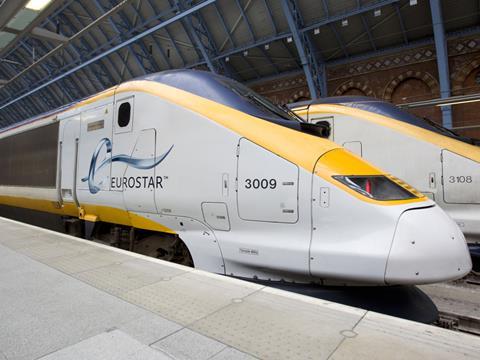
UK: On November 6 the National Audit Office published a report into the £757·1m sale of the UK's interest in cross-Channel high speed train operator Eurostar International, concluding that the government achieved its objective of maximising proceeds and that the sale represented value for money for taxpayers. However, Meg Hillier MP, Chair of the Committee of Public Accounts, said in a statement that the government’s focus ‘appears to have been on short-term cash rather than long-term value for taxpayers’.
The sale of the UK’s 40% stake to the Patina Rail consortium of Caisse de dépôt et placement du Québec (30%) and Hermes Infrastructure (10%) was completed in May and generated proceeds of £585·1m. Eurostar’s separate redemption of the UK government’s preference share added £172m. However, the NAO estimates that UK taxpayers invested £3bn in Eurostar prior to 2010, when Eurostar was changed from an unincorporated tri-national joint venture into incorporated company Eurostar International. This is ‘significantly greater’ than the proceeds generated from the sale.
NAO says the sale was ‘run well by the government and its advisers’. Changes to the Eurostar International shareholder agreement which strengthened the dividend policy made the sale attractive to a wide range of investors, such as pension funds, and there were 22 expressions of interest. The new shareholder agreement gave 55% owner SNCF full control of Eurostar International, and the NAO says there was ‘no indication that any of the potential investors wanted strategic control of the company; rather, they were happy for SNCF to take the lead given its rail expertise.’
There was ‘competitive tension’, with the three final-round bids being around a third higher than first round bids and the final price was 92% higher than the government’s central valuation of £305m. However, the NAO considers that credible valuations above £500m could have been supported.
The NAO believes that the timing of the sale was driven by the 2015 general election. Eurostar's profits are forecast to increase from 2016 once it has introduced new Siemens Velaro e320 higher-capacity trains, however the government had concluded that delaying the sale would bring uncertainty.
The preference share sold for £172m was due to pay a dividend from 2015 based on previous tax losses. This was estimated to be potentially worth £243m over the next decade, a discounted value of £216m.
Hillier said that ‘had it kept its share, the government was forecast to pay off over £500m of national debt over the next 10 years using dividends from its 40% share in Eurostar, and receive a further £243m in dividends from its preference share’.
Sale costs of £8·2m were 1·1% of the proceeds, with the majority being paid to financial adviser UBS and legal adviser Freshfields; the Treasury was concerned about the cost of the legal work but decided a change of team would be problematic. The government also agreed to pay Eurostar management and key employees up to £0·3m in total on successful completion.
‘The government prepared well for the sale of Eurostar and the sale process was run effectively. I regard the sale as value for money’, said Amyas Morse, head of the National Audit Office. ‘This case illustrates some general lessons for government as it embarks on an unprecedented asset sales programme forecast to exceed £62bn over this parliament. These lessons include: the need for detailed business cases in support of the decision to sell; objective and robust valuations to decide if, and when, to sell; and getting good value from advisers.’
- While the NAO says ‘there are currently no public statements of a firm date to run a train service’ by any potential competitor to Eurostar, as part of the due diligence process Roland Berger analysed the investment case for a potential competitor which might enter the market in the 2020s. It forecast that such an operator would make a loss in the first five years of operation and it would take ‘well over a decade’ before cumulative profits outweighed its losses. Roland Berger considered that this ‘appeared risky amid the significant uncertainty over operations, costs and timing of service introduction which a market entrant would face.'

















